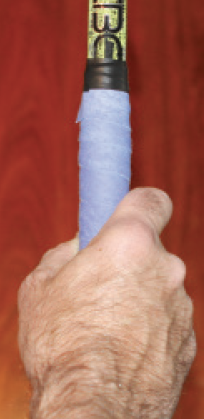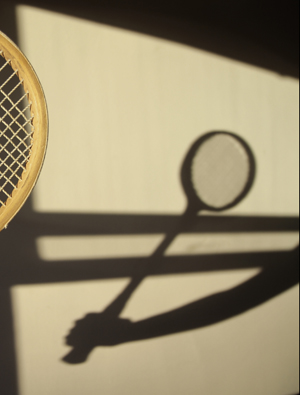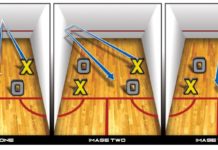By Natalie Grainger

Last month, we introduced a new LessonCourt series to help you break through different skill levels. The approach with this will be to look closely at specific techniques and strategies that can be improved upon to climb through the skill level divisions. This month, we take a step back to give more of a “big picture” view of typical progression from 3.0 through to 5.0.
 Many players at this level need some basic work on their technique and footwork to help them craft more strategic rallies and execute better shots. Players tend to hit too many cross-courts instead of hitting to the open court, often struggle to get the ball straight and catch side walls, find it difficult to get the ball back when it gets behind them and play off the back wall is often very weak. Return of serve is also often overlooked, but it can dictate many of the rallies. A lot of this can be improved by paying attention to the racquet face and at what angle it impacts the ball. The best way to simplify things is to start with the correct grip. Turning ones shoulders, using little shuffle steps to maintain rhythm and get behind the ball, should also be practiced. Specific footwork patterns like the two-foot plant can be learned to aid back wall play.
Many players at this level need some basic work on their technique and footwork to help them craft more strategic rallies and execute better shots. Players tend to hit too many cross-courts instead of hitting to the open court, often struggle to get the ball straight and catch side walls, find it difficult to get the ball back when it gets behind them and play off the back wall is often very weak. Return of serve is also often overlooked, but it can dictate many of the rallies. A lot of this can be improved by paying attention to the racquet face and at what angle it impacts the ball. The best way to simplify things is to start with the correct grip. Turning ones shoulders, using little shuffle steps to maintain rhythm and get behind the ball, should also be practiced. Specific footwork patterns like the two-foot plant can be learned to aid back wall play.
 Players at this level are fairly competent hitting straight and developing rallies, but to move to the next level, need to be able to cope with a higher pace. Practice by hitting the ball harder and moving faster. This will show any inconsistencies in technique and help with reaction time. More emphasis should be placed on taking the ball earlier, footwork patterns should be on the diagonal rather than side-on and learning how to use the core to turn rather than needing the feet in the perfect position is helpful. Strategic patterns of play at this level can be developed, allowing for more control of rallies.
Players at this level are fairly competent hitting straight and developing rallies, but to move to the next level, need to be able to cope with a higher pace. Practice by hitting the ball harder and moving faster. This will show any inconsistencies in technique and help with reaction time. More emphasis should be placed on taking the ball earlier, footwork patterns should be on the diagonal rather than side-on and learning how to use the core to turn rather than needing the feet in the perfect position is helpful. Strategic patterns of play at this level can be developed, allowing for more control of rallies.
 A 5.0 level player is a solid competitor that has limited weaknesses, good fitness and movement and the ability to control the ball well. To reach the next level, deception and holding the ball are required to excel. The groundwork for good technique is now important—changing the direction of the ball, dropping and driving with the same swing, learning how to flick and change the timing of your shot-making is necessary. The timing of the lunge and then swing will dictate good deception: put the foot down early and then wait while the ball drops before beginning your swing. A 5.0 player will need to learn how to put the ball in safe areas, work different cross-courts and short balls in to maximize time and space and take advantage of loose balls even when under massive pressure in order to break through to the next level. Superior racquet work or speed is required.
A 5.0 level player is a solid competitor that has limited weaknesses, good fitness and movement and the ability to control the ball well. To reach the next level, deception and holding the ball are required to excel. The groundwork for good technique is now important—changing the direction of the ball, dropping and driving with the same swing, learning how to flick and change the timing of your shot-making is necessary. The timing of the lunge and then swing will dictate good deception: put the foot down early and then wait while the ball drops before beginning your swing. A 5.0 player will need to learn how to put the ball in safe areas, work different cross-courts and short balls in to maximize time and space and take advantage of loose balls even when under massive pressure in order to break through to the next level. Superior racquet work or speed is required.





